Oct 20, 2023
T-Bird
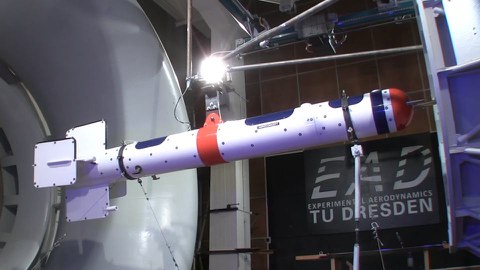
T-Bird in the measuring section with reflecting markers for optical position measurement; In order to ensure a stable and calm position at all angles, the body was supported and lashed several times.
This week's highlight in the wind tunnel were calibration measurements with the T-Bird trailing probe of the Alfred Wegener Institute (AWI) in Bremerhaven.
This trailing probe is used for measurements within the lowest air layers close to the ground mostly in polar regions for the purpose of climate research. It is lowered in flight from a carrier aircraft to determine not only the concentration of aerosols but also the atmospheric turbulence. For the latter purpose, it is equipped with a multi-hole probe at the bow, which can be used to measure the speed and angle of the local inflow.

EM-Bird (similar to T-Bird) under the tow plane Polar-6
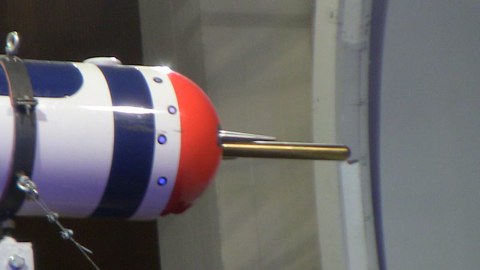
Bow section with multi-hole probe and air intakes for aerosol measurements
In order to be able to calculate the mentioned flow parameters from the pressures measured at the bores of the probe, a prior calibration is necessary. For this purpose, the entire T-Bird was installed in the test section of the wind tunnel and blown at a series of speeds as well as angles of attack and yaw. The typical speed of the carrier aircraft is about 60 m/s, so in addition to the standard 3 m nozzle, the smaller one with a diameter of 2 m was used, with which the original speed can be achieved. Nevertheless, the large cross-section was used as well to characterize and correct the effects originating from the varying test section blockage.
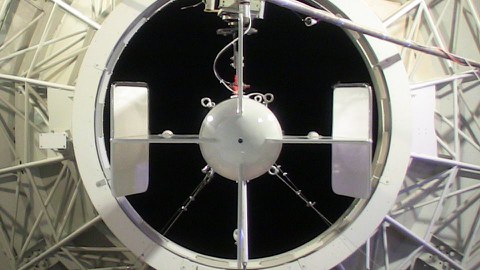
View from the collector to the tail unit and the 2 m nozzle
Thanks to the active help of colleagues from the Chair of Aircraft Engineering and the manufacturer Zeiss-GOM, it was possible to determine angles of attack and yaw with high precision using state-of-the-art optical measurement technology.
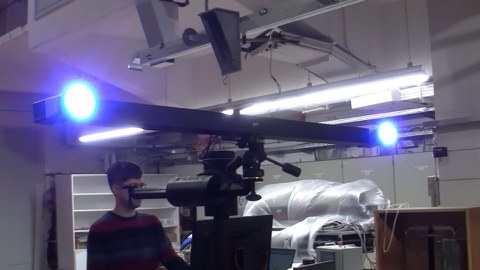
Stereo camera system PONTOS Live with powerful LED lamps for object illumination
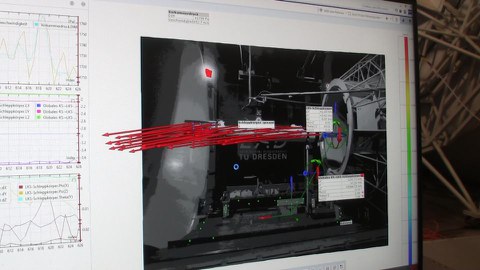
During the measurement: The red arrows on the screen strongly amplified indicate the small deformations in the suspension.
In the future, more intensive collaboration with the AWI is planned for the further development of the trailing probes, which have so far been purely passive in following the tow aircraft and can be difficult to control during abrupt manoeuvres. For this reason, it is planned to be equipped the bird with active control surfaces, suitable sensors and appropriate control technology. In this way, the trailing probes should be able to maintain a predetermined height above ground more precisely and avoid obstacles such as ridges of pack ice independently. The first step in this direction will be the development of flight dynamics models of the system consisting of aircraft, rope and towed body.
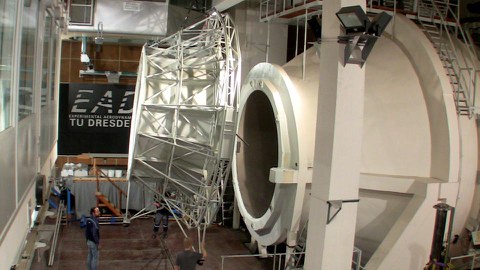
The 3 m nozzle floating back to the settling chamber
